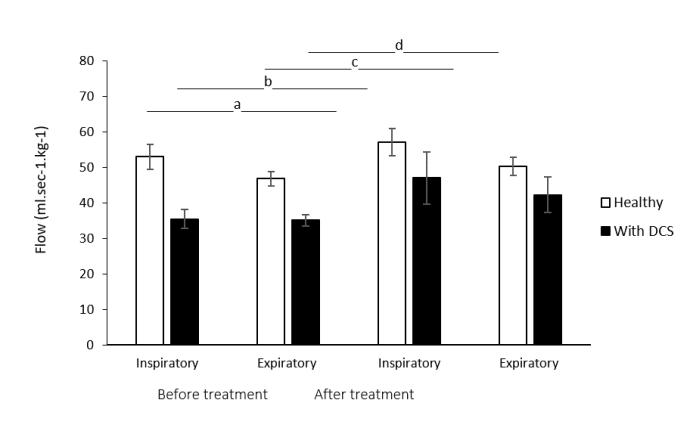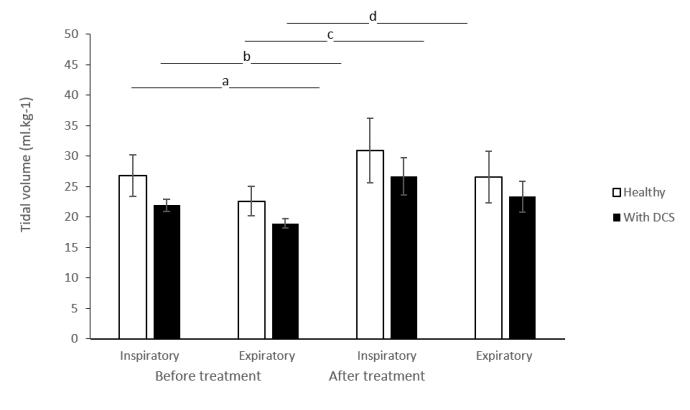We investigated the respiratory physiology of 25 loggerhead sea turtles (Caretta caretta) that were opportunistically tested after having been brought to a rehabilitation facility at the Oceanogràfic. The turtles were divided into two groups: turtles with or without GE from fisheries interaction. While we could not control for age, sex or general health among individuals, our results indicate that hyperbaric treatment significantly increased respiratory flow and tidal volume.
Only the data regarding pre-post treatment are presented here, for more results please download the master thesis.



Responsible for this page:
Director of undergraduate studies Biology
Last updated:
04/27/17
